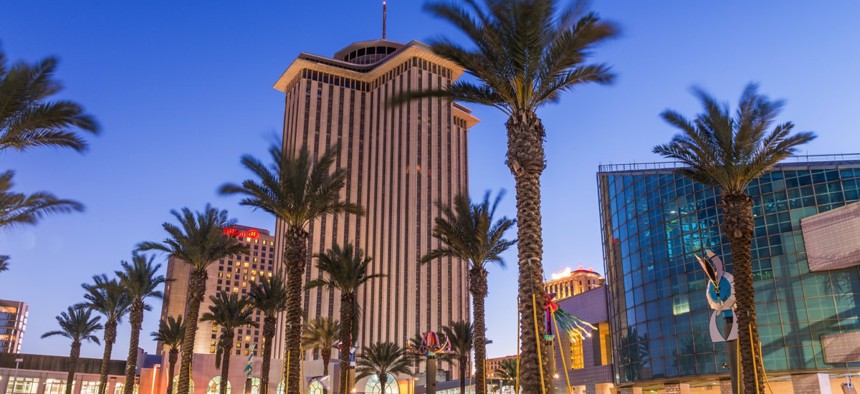U.S. Cities Make Biodiversity Their Top Resilience Priority

New Orleans
“We’re not using nature well enough.”
Urban biodiversity in New Orleans and Boulder, Colorado couldn’t be more different, yet the two U.S. cities found surprising common ground recently at The Melbourne Network Exchange .
Boulder’s inland, elevated and alpine profile contrasts starkly with New Orlean’s coastal, sea-level and subtropical features, but climate change and species loss and fragmentation remain shared challenges.
Both cities view improving biodiversity as their top resilience priority for the environmental and societal benefits, an agenda they share with international cities Semarang, Indonesia; Durban, South Africa and Melbourne, Australia—all five early members of the 100 Resilient Cities network.
“Although the society is different, the geography is different, the resources are different, what we’re seeing is the same manifestation of problems,” said Debra Roberts, Durban’s chief resilience officer, last month at the third-ever 100RC network exchange. “So cities growing with great difficulty incorporating biodiversity in a meaningful way, [and] a lot of projectization of the biodiversity issue rather than a more systemic approach.”
Or as Melbourne’s CRO Toby Kent succinctly put it: “We’re not using nature well enough.”
Take New Orleans, for example. The city’s heavy use of concrete stormwater infrastructure backfired when Hurricane Katrina hit in 2005, acting like “a rifle barrel for water to fire into the city,” Kent said.
A return to swampier landscape would ensure the natural flow of water, and biodiversity would become a lead and lag indicator of the urban ecosystem’s health.
New Orleans is also focused on becoming a “cool city.” The city’s poor and seniors find themselves disproportionately living in “heat islands,” necessitating an intervention where greenspace and tree canopies are increased. More tree cover means more shade.
Tree canopy has the added benefit of slowing rainfall for better stormwater management, a win-win because infrastructure is typically less built out and flood risk higher in poorer parts of New Orleans.
Boulder has had the most success promoting biodiversity and developing regional solutions post-crisis, said CRO Greg Guibert. Profound drought, pollinator decline and invasive species denuding urban and natural forests frighten partners into action more than public outreach.
The city is mindful of its identity and the “role of place” when proposing interventions and asking for investment in green infrastructure, Guibert said, often tying projects to recreation and sporting benefits.
“What we need in terms of knowledge, in terms of partners and stakeholders, frankly from my perspective is high risk tolerance, he said. “We need to be trying things that we’ve never tried before. There isn’t any amount of data that’s going to solve our problems.”
Outside of nongovernmental and neighborhood organizations, New Orleans has become more mindful of surrounding communities as partners, said CRO and Deputy Mayor Jeff Hebert
The city is also incorporating children in the educational process around its biodiversity initiatives, much like the environmental movement around recycling in the U.S. began in the classroom. Today’s children will be coming of age as New Orleans earliest biodiversity markers are achieved.
On a more basic level, a beautified New Orleans will boost the wellness of residents studies show, improving heart rates and reducing stress just looking at trees and greenspace.
“Public beauty has a huge importance in public health,” Hebert said.
Here’s a fuller conversation from the network exchange:
Dave Nyczepir is a News Editor at Government Executive’s Route Fifty and is based in Washington, D.C.
NEXT STORY: New York City's Wi-Fi Kiosks Now Include a 'Yelp for Social Services'






